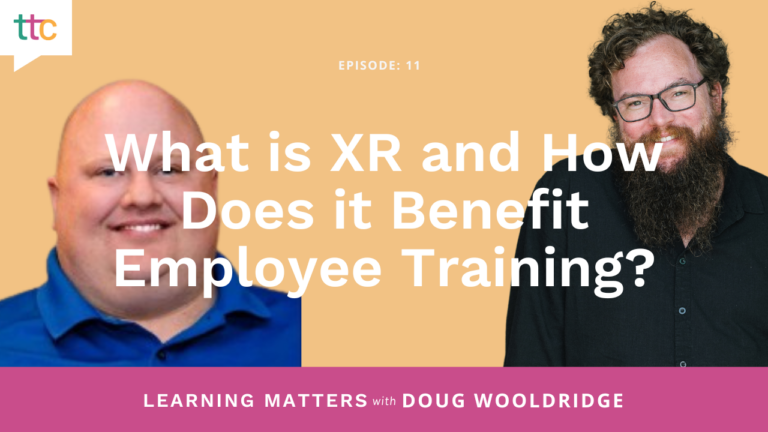Are you considering outsourcing learning and development tasks to consultants? While this can be a great way to get the expertise you need sans the overhead and long-term commitment of hiring employees, it can also be a source of anxiety for some.
And if you’ve ever turned to a generic talent marketplace rife with newbie professionals or worked with a staffing provider that didn’t offer the ongoing support needed to achieve your goals, then you’ll know this fear all too well.
Hesitations aside, it’s hard to deny the bottom-line benefits of working with a consultant vs. a full-time employee. Let’s look at the numbers:
- The average cost to hire full-time employees is $4,700. (SHRM)
- The overhead cost per full-time employee is 1.25-1.4x their salary. (SBA)
- It costs 6-9 months of salary to replace full-time employees. (SHRM)
In this post, we’ll explore tips for building strong relationships with freelancers including how to establish clear expectations, effective communication strategies, boost accountability, budget scope management, and more. This guide will provide practical advice to help you develop an effective outsourcing strategy.
Establishing Clear Goals and Objectives
Establishing clear goals and expectations when working with consultants or a talent provider is critical to ensuring successful partnerships. Consider the following:
For One-Time Projects: Start by defining the scope of the work that you need the consultant to do. Be as specific as possible, and include details such as deliverables, timelines, and budget. Identify what success looks like and discuss expectations.
For On-Going Support: You’ll need to define the key responsibilities the consultant will execute. Consider the experience required including nice-to-haves and deal breakers. SHRM offers free job descriptions to give you a starting point or defer to these prompts:
- What are the working requirements (virtual, on-location, hybrid, are there time zone requirements or standard working hours/recurring meetings that the consultant needs to be available for?)
- What tools do they need to do the work? (Articulate, Vyond, JIRA, etc.)
- What deliverables will they be asked to create and what level of ownership will they have? (Will they be expected to strategize or execute with guidance?)
- What does success look like in the role? (KPIs and performance metrics)
Addressing these questions will help you and the consultant or talent partner meet your unique needs.
Managing Costs and Budgets
When working with consultants or talent providers, it’s essential to set realistic budgets and manage costs effectively. This involves establishing clear scope and timelines, negotiating rates, and avoiding scope creep. Keep the following in mind:
- Get creative. If you’re particularly budget conscious you may want to consider utilizing junior-level or offshore talent to meet your goals. Another option could be to split the work between a strategist and an executor such as a Learning Architect and Content Developer which allows budget flexibility and the benefit of having specialty skill sets.
- Long-term value. While I’m all for cost-effectiveness, remember that in most instances a consultant with deep expertise can help you save time and money in the long run.
- Fixed-price contracts. AKA, flat rate contracts provide a clear and predictable cost for the work to be performed. This can help avoid unexpected costs and ensure that the collaboration stays within budget.
The benefit of working with an experienced talent provider is that they can help you work within your budget to meet your unique needs. Interested in exploring flat-rate learning design and development? Contact us below to learn more about our flexible on-demand plans.
Building Trust in Consultant Competence and Work-Product Quality
Building trust in consultant competence and work-product quality is a two-way street that requires both consultant and the client to be open and honest. Here are some strategies that can help:
- Request work samples. Take it up a notch by asking for a summary of how they personally contributed to the project or initiative.
- Trust but verify. Validate references and read online reviews (Glassdoor, Reddit, Google, Facebook, etc.). If unavailable ask them to provide a summary of outcomes or results from their latest collaboration.
- Try before you buy. Some consultants are comfortable with completing an assessment prior to engaging, and some are not. In the same vein, some talent providers will offer a trial period to ensure the match is a good fit for both consultant and client. Or a re-matching guarantee.

One FREE Week!
New clients, tap into our talent with one week of Innovators on Demand® on us.
Get started with one of our skilled Innovators.
Overcoming Communication Challenges
As Brene Brown says — “clear is kind”! It’s critical to keep everyone on the same page and ensure that the consulting collaboration is progressing as planned. Here are some strategies that can help overcome communication challenges when working with consultants:
- Establish communication preferences from start. Zoom/Teams chat, camera-on/off, preferred working hours, etc.
- Set up regular communication. Track progress, address any issues or concerns, and ensure each party’s goals are being met.
- Monitor progress. Check-in on predetermined success criteria. If there are any issues or concerns, address them promptly to keep the partnership productive.
Working with consultants can be a great way to access specialized expertise, save time, and reduce costs. However, it requires a different approach than working with traditional employees. By following the advice outlined in this post, you can set yourself up for success when working with freelancers. Remember to establish clear expectations, communicate effectively, provide feedback, and maintain a positive working relationship. By doing so, you can build a network of talented and reliable freelancers who can help take your business to the next level. With careful planning and a collaborative approach, you can achieve great results when working with freelancers.
We help you hire the top 4% of L&D talent so you can focus on the big picture. Pre-vetted, hand-matched, innovation-ready from day one.
No hiring fees, no job posting — staffing simplified.








